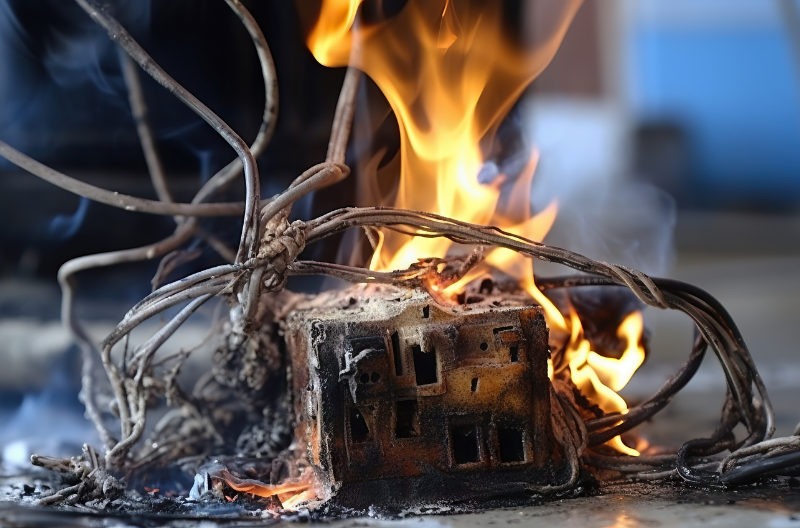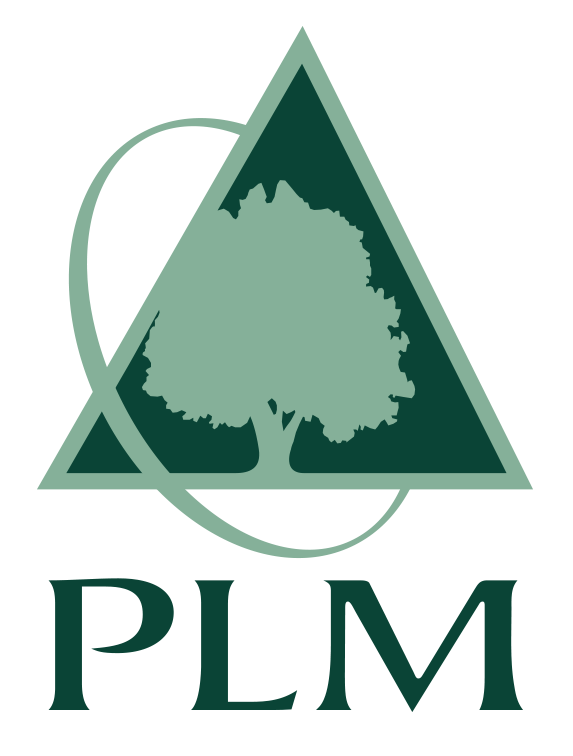Pennsylvania Lumbermens Mutual (PLM) is dedicated to supporting business owners in managing their risk and providing valuable resources. Our monthly large loss meetings involve different departments including Underwriting, Loss Control, Business Development, and Claims to analyze and evaluate losses from various angles, demonstrating PLM’s active commitment to continuous improvement and risk mitigation.
Our multidisciplinary team meticulously analyzes and evaluates these losses from every angle. We examine whether the coverage in place was adequate, scrutinize the implementation of safety measures and processes, and brainstorm what could have been done to prevent such losses. Sharing The Claims Files: Mitigating Large Losses report is to educate and raise awareness about effective risk management practices. This kind of transparency and collaboration benefits both insureds and the industry.
General Liability
Defending Against Liability Claims
Construction Defect Claims
As business owners, reliance on others to operate efficiently is common, yet it also amplifies business risks. Many building material dealers find themselves drawn into construction projects, whether directly, indirectly, or with no involvement at all. Even if only minimally engaged, there’s a high likelihood of being embroiled in a claim, leading to increased losses. Often, we serve merely as suppliers, distributors, or sellers of products, with no role in installation. Consequently, substantial resources are expended on defending clients against liability claims. In some instances, opposing parties allege product defects as the cause of losses, necessitating costly expert opinions to counter such assertions.
Construction Defects Entail
- Numerous plaintiffs.
- A multitude of defendants including design professionals, developers, general contractors, several subcontractors, and potentially the insured, who may not fit into any of these categories.
- Uncertain loss date.
- Varied policy terms.
- Multiple damages.
- Extended statutes of limitations.
- Typically, the primary emphasis is on damage assessment and coverage rather than liability determination.
Proper Risk Transfer Mechanisms
These losses gradually emerge, often taking approximately four years before they are noticed. Due to the extensive nature of issues associated with construction defects, these losses can have prolonged effects and significant costs. The Allocated Loss Adjustment Expense (ALAE) typically exceeds 100%, and when additional insureds such as contractors and subcontractors are involved, it can surpass 150%. However, with proper risk transfer mechanisms in place, the ALAE tends to improve.
Construction defects loss tend to be associated with:
- Doors, windows, and exterior wall deficiencies.
- Roof leaks.
- Damp proofing and water proofing deficiencies.
- Foundations movement.
- Drainage deficiencies.
- Road and driveway deficiencies.
- Electrical and HVAC deficiencies.
- Plumbing and other leaks to internal systems.
- Sound, odor, vapor transmission and code compliance deficiencies.
Claims Determine Loss Reserves
Challenges associated with these losses include the dominance of Incurred But Not Reported (IBNR) claims in loss estimates, making comparisons with other casualty claims difficult due to their distinct nature. Legislative impacts and concerns about the past not accurately predicting the future add complexity to evaluation. Consequently, reviewing worst-case scenarios becomes necessary and may influence premium embedding for risks associated with such exposures. Geography, the mix of claim types, and the size of claims determine loss reserves, with coastal areas experiencing an uptick in such claims.
A construction defect case involving a $20M home and a $1M pool resulted in a lawsuit against the general contractor, subcontractors, and the insured who supplied the doors and windows, totaling $725K incurred. It’s crucial to safeguard ourselves while assisting you in protecting your interests. Recently, a client inquired about removing CG 21 86, an exclusion form for exterior insulation and finished systems; however, we advised against it. Even removing the wording “distribution and sale” would not suffice, as the insured could still be implicated if material, they supplied or distributed is alleged to be defective. This liability persists due to the nature of the relationship with the general contractor (GC) or subcontractor. Additionally, instances have occurred where an insured, responsible only for sales and distribution, subcontracted installation to an outside company, resulting in us having to assume defense costs. In 2023, the loss of Product Construction Defect (PCD) approached nearly $4M, with legal PCD reaching almost $3M, highlighting the significant financial implications of such cases.
Safeguard Strategies
Nevertheless, you can mitigate your risk by implementing appropriate risk management measures. Contracts between the GC and subcontractors, along with hold harmless agreements, should be established to safeguard the insured. It’s advisable to have your attorney review such agreements to ensure you have the best possible protection.
PLM Resources
PLM offers a wide array of safety resources designed to assist business owners in safeguarding their operations.
- To learn more, please visit our Operations Loss Control Guidelines
Property
Defending Against Property Claims
The Rise of the Fires
Property Insurance Trends
In recent years, loss trends have been surpassing the rate increases, largely driven by a rise in catastrophes, severe weather events, and significant fire losses. This article will focus on the Increase in Fire Incidents—particularly the surge in electrical fires and the severity of resulting losses—and proactive measures you can implement to mitigate these risks. While fires can occur throughout the year, electrical fires tend to peak during the winter months, from December through February. At Pennsylvania Lubermens Mutual Insurance (PLM), we’ve observed a quarterly peak in such incidents.
Top 5 Common Causes of Workplace Fires
- Equipment Malfunction.
- Electrical Defects like loose wiring or malfunctioning equipment leading to potential overheating and sparks.
- Cluttered Spaces.
- Presence of Combustible Materials on-site.
- Human Errors.
Top 5 Primary Causes of Electrical Fires
- Faulty Electrical Outlets.
- Aging Wiring Systems.
- Dated Appliances.
- Improper Use of Extension Cords.
- Faulty Light Fixtures.
Facts About Electrical fires
Electrical fires account for 30% of all fires, and a staggering 48% of businesses close down as a result of such fires. These figures not only affect the businesses directly involved but also have significant repercussions on the wider economy. Many individuals rely on these businesses to foster growth within their communities and beyond. According to the National Fire Protection Association, there are approximately 33,470 commercial electrical fires annually in the United States. These fires claim nearly 45 lives and result in approximately $1.63 billion in direct property damage. Overall, they contribute to a financial burden exceeding $328 billion annually for U.S. businesses.
Updating Your Electrical System Is Critical
The frequency of updating your electrical system depends on factors such as the age of the building and the last time the system was upgraded. If your system is significantly outdated, particularly with knob and tube wiring dating back to the 1940s, it’s imperative to consider a comprehensive update. These old systems pose inherent risks as they were not designed to handle modern power loads and lack essential safety features like ground wires. Upgrading to modern wiring can provide longevity, with systems typically lasting up to 100 years. However, the need for updates is also influenced by the type of protective sheathing and insulation used. The lifespan of these components typically ranges from 50 to 70 years, indicating when it may be necessary to consider another update.
Electrical fires pose a significant threat due to their distinct characteristics in terms of spread and suppression compared to fires caused by other sources. Hence, it’s crucial to take proactive measures and understand how to respond to such incidents. For instance, when outdated wiring is combined with combustible materials on site, such as accumulated sawdust that hasn’t been addressed, severe fire losses can occur, often leading to complete destruction.
Examples of Recent Electrical Fires
The following cases illustrate examples of electrical fires experienced by our clients:
- A total fire loss occurred due to faulty wiring of a fan and printer, resulting in total incurred costs of $2.2 million. The operation was closed for the day, and no equipment was running at the time of the incident.
- An electrical fire occurred in the evening when the operation was closed, leading to a total fire loss. The fire not only destroyed the building and its contents but also caused damage to inland marine and auto assets. The total incurred costs amounted to $6.7 million.
Efficient Strategies to Counteract Rising Fire-based Property Claims Costs
Insureds are strongly advised to opt for annual maintenance conducted by a professional, licensed electrician, which represents the ideal scenario. However, some of our insureds face challenges as they prefer to utilize an in-house maintenance person or team, who may not always possess the necessary expertise. These individuals often lack the requisite training to perform thorough property inspections and provide appropriate recommendations. If the insured chooses to rely on an in-house team, it is recommended to undergo retraining at least once every three years, as per the guidelines outlined by the National Fire Protection Association (NFPA). This retraining should occur whenever there are additions to new equipment, changes in technology, alterations in job duties, significant behavioral shifts, or following failed inspections. Additionally, Occupational Safety and Health Administration (OSHA) mandates annual training for such personnel.
Fire Safety & Property Protection Resources
PLM offers a wide array of safety resources designed to assist business owners in safeguarding their properties against potentially catastrophic events such as fires.
- To learn more, please visit our Fire Loss Control Guidelines
Contact PLM
The Claims Files: Mitigating Large Losses is a true account of actual large loss situations. This is an excellent initiative to promote safety and learning in this field. Our goal in sharing these real-life situations is to better educate our insureds in hopes of ultimately reducing risk. Equally, we want to create an ongoing dialogue where we can openly discuss and regularly share lessons learned. If you have specific questions or feedback regarding the article or wish to initiate a discussion, you can reach out to Veronica Wilkins at vwilkins@plmins.com.




